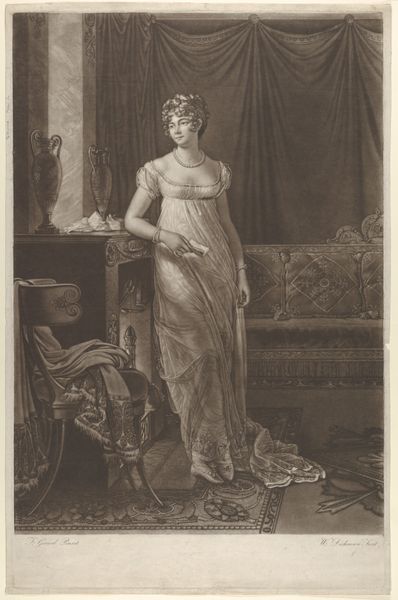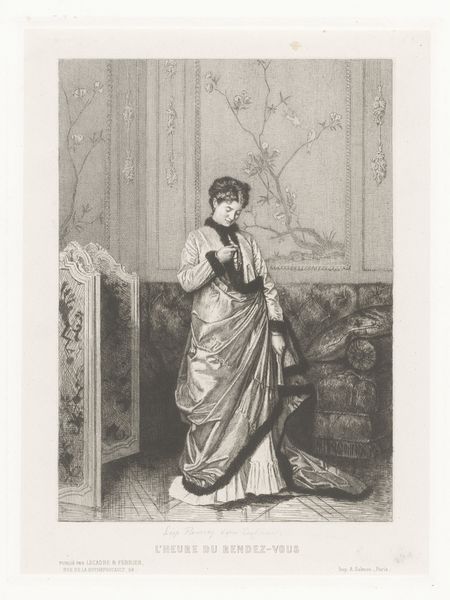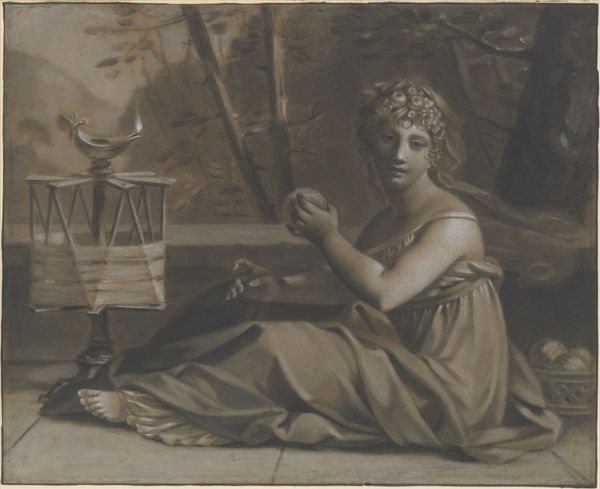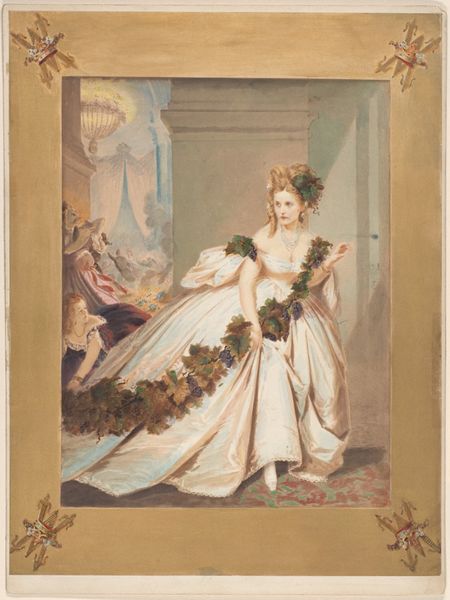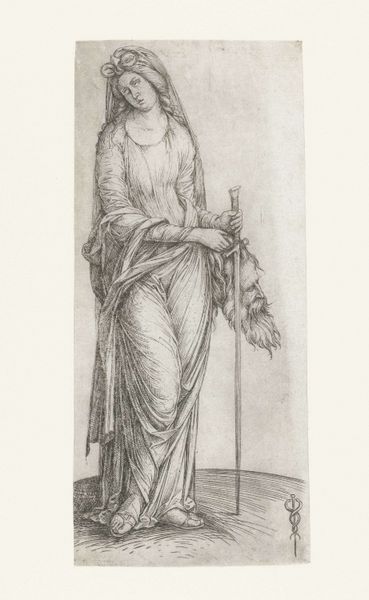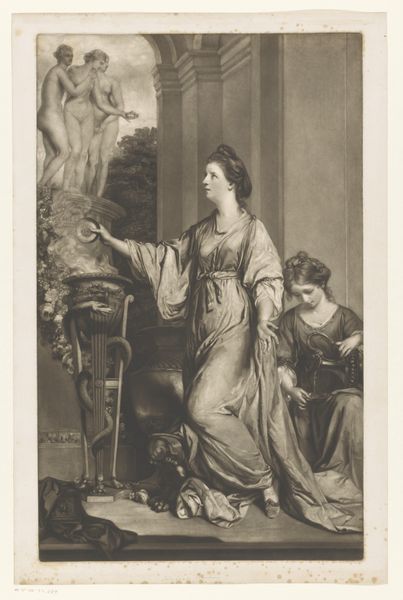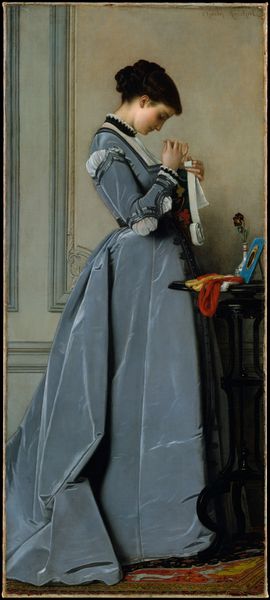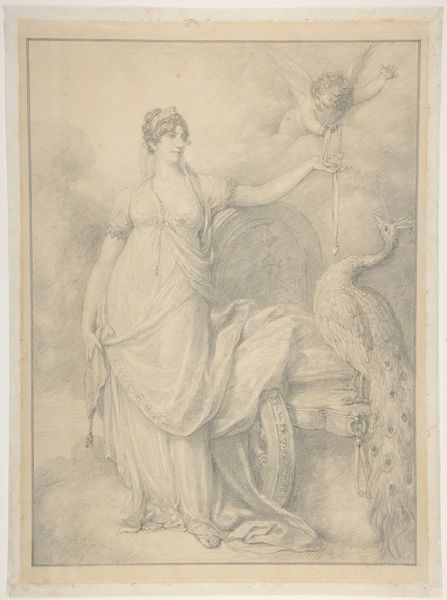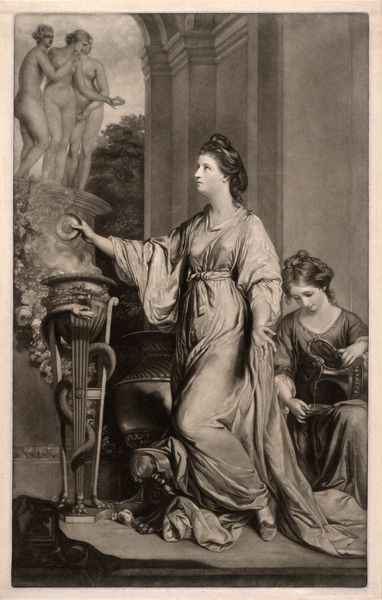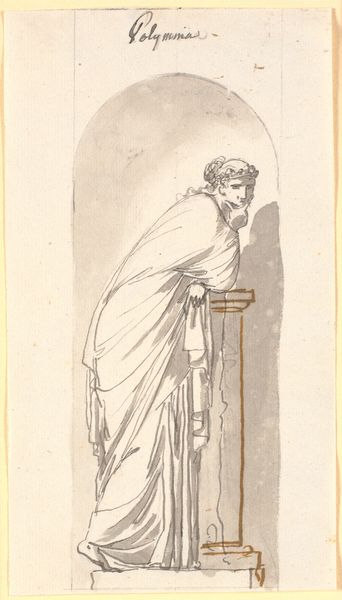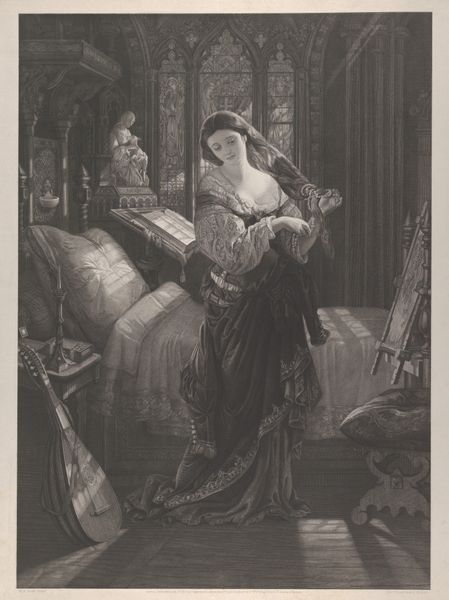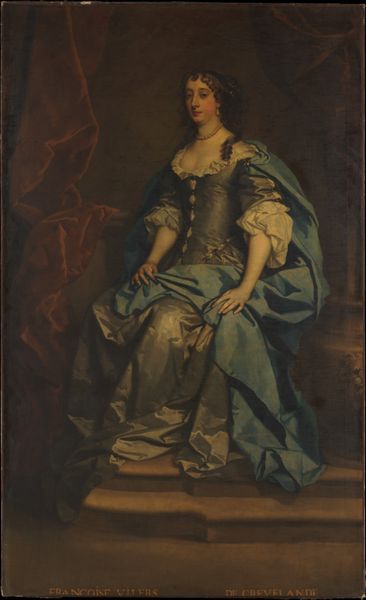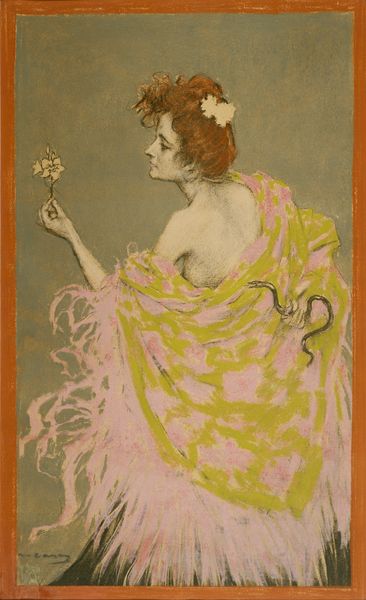
Dimensions: 39 3/4 x 29 7/8 in. (101 x 75.9 cm)
Copyright: Public Domain
Curator: Let's spend a moment with Pierre-Paul-Léon Glaize's "Before the Mirror," created in 1873. Editor: My initial thought is opulence, maybe a touch of melancholy. The way light plays on the fabrics suggests expense, yet the woman’s gaze is somewhat distant. Curator: It is striking how Glaize uses this mirror to frame her. It isn't merely a reflection; it almost creates another reality, inviting contemplation on the self and its projections. I can't help thinking of Vanitas paintings, this awareness of worldly things combined with the fleeting nature of beauty. Editor: And consider the sheer volume of material on display. That fur-lined gown, the orientalist carpets, the fabrics piled on the sofa. Each item represents a chain of production, of labor both domestic and abroad. It suggests an entire social structure built on acquisition and display. It all has to come from somewhere! Curator: True, but consider fur itself – a historic symbol. This isn’t mere warmth; it's about status, luxury, even power. And the subtle unease in her posture... Do you feel a critique of the burdens placed on women to perpetually present themselves? Editor: Possibly, but what about the painter's labor? Each brushstroke aimed at convincing us of these luxurious surfaces involved careful craft. Glaize is marketing not just wealth but his virtuosity at representing it. Curator: Indeed, he invites us into this realm but on his own terms. Notice the deliberate clutter—items strewn as if this moment is unplanned, naturalistic. Editor: Though it clearly isn’t! This deliberate staged quality is key; it exposes the performative aspects of domestic life among the wealthy at the time. The room is almost another character, shaped by market forces and designed to reinforce privilege. Curator: Exactly. Glaize gives us access to both private and the symbolic spaces, the ways meaning becomes entwined with the stuff of everyday life. Editor: Reflecting on this painting's layering of image and texture, I appreciate how much it tells us about the period's values—or rather, the material expressions of those values. Curator: For me, the quiet intensity, the layered symbolism, it makes it a captivating study of how we perceive ourselves and what stories those self-perceptions tell.
Comments
No comments
Be the first to comment and join the conversation on the ultimate creative platform.
